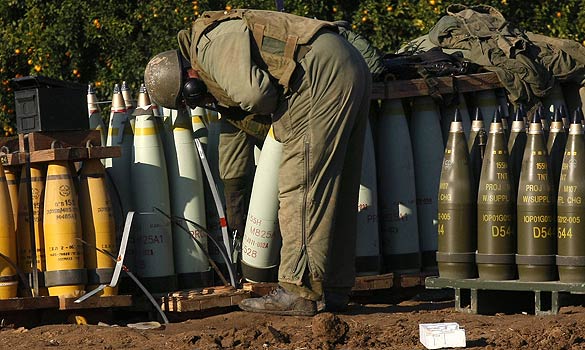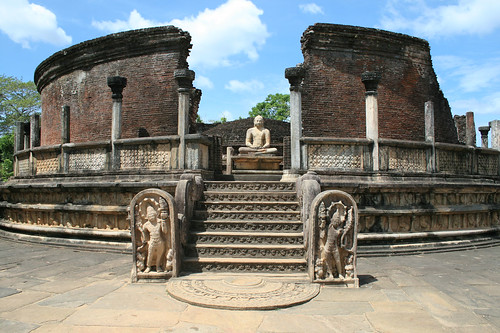
According to Sinhalese accounts it was crime and banishment that led to their settlement in Sri Lanka in the 5th or 6th century BC. Vijaya, son of a North Indian king, was ousted from his title and kingdom due to his acts of assault and robbery. With a contingent of 700 men, the sinha (lion) prince was set adrift on the high seas in dilapidated ships, to face his destiny – punishment by death. But destiny took a different turn and as they travelled south, Vijaya and his men were blessed by the Buddha and (as accounts would have it) came to land on the west coast of Sri Lanka on the very day that the Buddha attained enlightenment. Vijaya and his men settled around Anuradhapura, forming the basis of a Sinhalese kingdom that developed there in the 4th century BC. Later, the Sinhalese kingdom of Ruhunu was established in the southwest but Anuradhapura remained the stronger kingdom. Early settlement took place mainly along rivers, as the aridity of the north was not conducive to human settlement and the cultivation of crops. No doubt banishment and the need for survival can be great motivators: Vijaya and his descendants demonstrated impressive resourcefulness. To overcome the challenges of climate they constructed water channels and reservoirs (known locally as tanks) – great feats of engineering and mathematics. Such inventiveness enabled the early settlements to develop and prosper.

In the 3rd century BC the Indian emperor Ashoka sent his son Mahinda and his daughter Sangamitta to the island to spread the Buddha’s teachings. Mahinda soon converted the Anuradhapuran king Devanampiya Tissa, an event that is tremendously significant to the Sinhalese as it deeply influenced their customs, created a sense of national identity and, by developing scriptures and commentary, instituted a literary tradition. The mountain at Mihintale marks the spot where the conversion is said to have occurred. Today 1840 steps lead up the mountain to the site – it’s a popular pilgrimage place, especially on the June poya (full moon), the reputed anniversary of the king’s conversion.
Sangamitta brought to Sri Lanka a cutting of the Bodhi Tree under which the Buddha attained enlightenment. She planted this in Anuradhapura, where it still survives today, garlanded with prayer flags and lights. Other bodhi trees, grown from cuttings of the Anuradhapuran tree, now spread their branches beside many of the island’s temples.
With the conversion of the king to Buddhism strong ties were established between Sri Lankan royalty and Buddhist religious orders. Later, these ties strengthened as kings, grateful for monastic support, provided living quarters, tanks and produce to the monasteries. A symbiotic political economy between religion and state became consolidated. When the Sinhalese king Valagambahu fled from South Indian invaders he was given safe haven by monks who resided in the cave structures at Dambulla. When he regained his position in about 90 BC he expressed his gratitude by developing a huge cave-temple complex. Since that time it has been a centre of Buddhist practice.
Buddhism underwent a major development when the teachings, previously conveyed orally, were documented in writing. Sri Lankan monks played a significant role in the documentation process, when, at the Aluvihara monastery in the 1st century BC, they began in-depth commentaries on the teachings. Their work forms the major part of the classical literature of the Theravada (doctrine of the elders) school of Buddhism. It was in Sri Lanka that the Theravada school developed, later spreading to Buddhist countries in Southeast Asia. Even today, Buddhists of the Theravada school in Myanmar, Thailand and other countries look to Sri Lanka for spiritual leadership and interpretation of the scriptures.
Another event that served to intensify Buddhism in Sri Lanka was the arrival of the tooth relic (of the Buddha) at Anuradhapura in AD 371. It gained prominence not only as a religious symbol but also as a symbol of sovereignty – it was believed that whoever held custody of the relic had the right to rule the island. Modern-day presidents, prime ministers and governments see it as their duty to protect the relic and the rituals that surround it. It now lies in the Temple of the Sacred Tooth Relic (Sri Dalada Maligawa) in Kandy.
In AD 473, King Kasyapa assumed the throne by engineering the death of his father and the exile of his elder brother, Mugalan. Kasyapa’s skills were not limited to eliminating relatives – he also recognised a good piece of real estate and was a dab hand at property development. His reign saw the construction of the spectacular rock fortress of Sigiriya, with its intricate water systems, ornate gardens and frescoed palaces. However, the exiled Mugalan, incensed by his ousting, returned to Sri Lanka with an army of Indian mercenaries. Mugalan defeated Kasyapa and reclaimed the throne, but he established a perilous precedent. To retain power, future Sinhalese kings found themselves beholden to Indian mercenaries. Centuries of interference and disorder followed with repeated invasions and takeovers of Anuradhapura by South Indian kingdoms, and self-defeating entanglements in South Indian affairs by Anuradhapura’s rulers.
Anuradhapura was pummelled many times but rebuilding was possible through rajakariya, the system of free labour for the king. This free labour provided the resources to restore buildings, tanks and irrigation systems, as well as to plant, cultivate and harvest crops.
Finally in 11th century AD, Vijayabahu I, weary of the continual cycle of conflict, destruction and renovation, abandoned Anuradhapura to make Polonnaruwa, further southeast, his capital.







